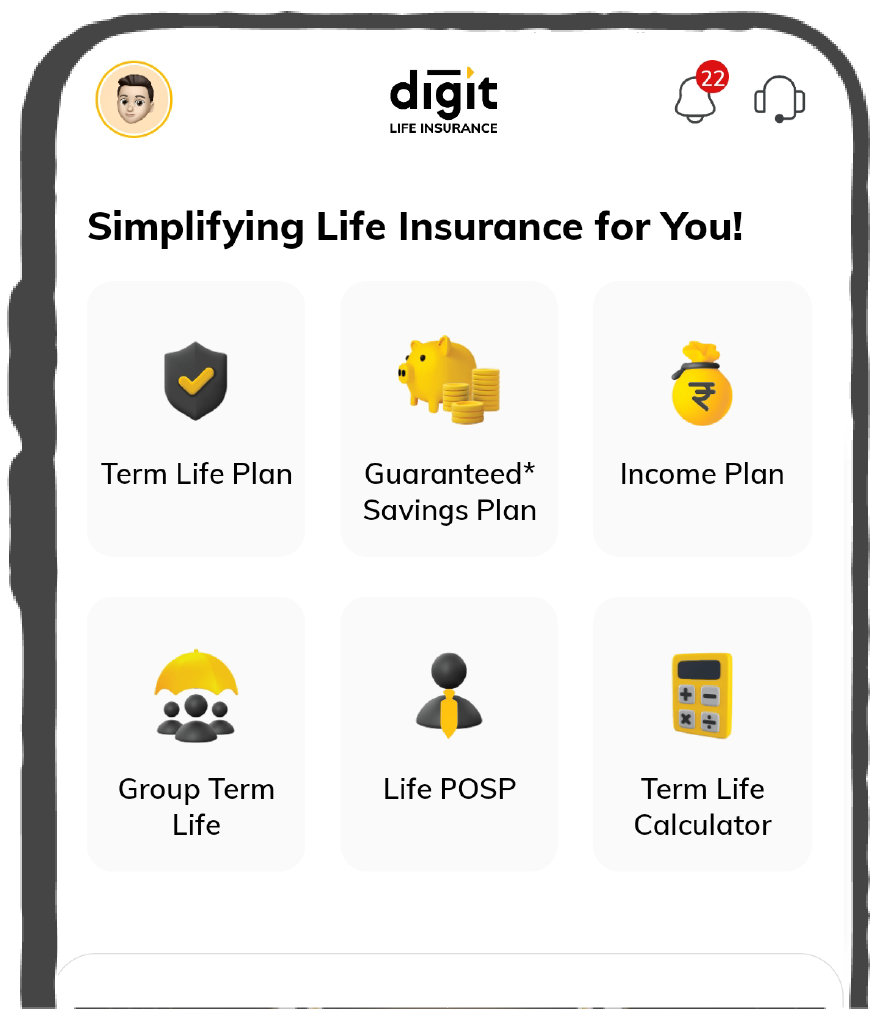Simplifying Life Insurance in India
Defined Benefit Pension Plans for Retirement
Defined benefit plans are a type of retirement plan that provide an employee with a fixed and guaranteed income after retirement. This income can be in a regular income form or a lumpsum form.
These plans have become less common in recent years. However, many individuals still have access to these plans through their employer or a union. Understanding how defined benefit pension plans work and their benefits can be crucial for planning a secure retirement.
Let's explore the basics of defined-benefit pension plans and their advantages and disadvantages.

Table of Contents

What is a Defined Benefit Plan?
A defined benefit plan is a type of retirement plan in which an employer promises to pay a specific benefit to the employee upon retirement. This benefit is calculated based on a formula that typically considers the employee's salary, years of service and age at retirement.
Thus, ‘defined’ means that the benefit to be received is defined through a formula known in advance.
Defined benefit plans provide retirees with a fixed and guaranteed income for life, which can benefit those who do not want to worry about managing their retirement investments or outliving their savings.
Advantages of Defined Benefit Plans
The major benefits of a defined benefit plan are:
A Secure Retirement
A defined benefit plan guarantees a specific retirement income to employees based on their years of service and salary history, thus providing the employees with secured financial protection after retirement.
Improved Retention for the Employer
Employers are responsible for funding the defined benefit plan and making any necessary contributions to ensure the plan is well-funded. This takes the burden off employees and ensures that there is enough money to pay out retirement benefits.
Employees perform better and stay longer when they feel cared for, when the benefits provided by their employer go beyond their paychecks, to the well-being of their family and even to their retirement phase.
Risk Management
Defined benefit plans offer risk management benefits to both employers and employees. Employers assume the investment risk associated with the plan, while employees are guaranteed a set retirement income regardless of market conditions.
Retirement Planning
Defined benefit plans provide employees with a clear understanding of their retirement income and can help them plan for retirement. Employees have an idea of what they will receive at the time of their retirement and can, hence, plan their future finances better. They can use the guaranteed retirement income from the plan to supplement other retirement savings and benefits.
Financial Cover for Spouse
The plan does not cover just the employee's retirement, but in an unfortunate case when the employee dies, the surviving spouse keeps receiving a percentage of the benefits.
Tax Benefits for the Employer
Being an employer-specific plan, where the employer is the primary contributor of funds, they are eligible for tax benefits. The contribution paid to the employees in the defined benefits plan is tax deductible for the employer.
How Does a Defined Benefit Pension Plan Work?
In a defined benefit plan, the employer is responsible for the contributions and for seeing that the corpus reaches the promised retirement benefits.
Once an employee retires, they receive the accumulated retirement benefit in a payout option of their choice. The benefit amount is usually calculated using a formula that considers the employee's salary and length of service with the company.
They must work with the employer for a certain period before getting the right to this benefit. This period is known as the vesting period. However, if they quit before completing this vesting period, they may not receive the complete benefits.
Real Life Illustration of Defined Benefit Pension Plan
Let's consider the case of Raghu, who works for a company that offers a defined benefit pension plan.
The plan stipulates that the retirement benefit is calculated based on the formula: 2% of the average of the last 5 years of salary multiplied by the number of years worked.
Raghu has been working for the company for 30 years, and the average of his last 5 years of salary is ₹8,00,000.
According to the formula provided by the pension plan:
- Retirement Benefit = 2% of ₹8,00,000 (average salary) × 30 (years of service)
- Retirement Benefit = 0.02 × 8,00,000 × 30 Retirement Benefit = 4,80,000 per year.
In this scenario, upon retirement, Raghu would be entitled to receive an annual pension benefit of ₹4,80,000. The company Raghu works for has been contributing to the pension plan throughout his employment to ensure that upon retirement, the plan has enough funds to provide Raghu with this defined benefit.
Raghu’s pension plan also comes with a vesting period of 5 years, which means Raghu must have worked for the company for at least 5 years to have the right to receive pension benefits. Since Raghu has worked for 30 years, he is well beyond the vesting period and fully entitled to his pension benefits. If Raghu had decided to leave the company before completing 5 years of service, he would not have been eligible to receive the complete pension benefits as outlined by the plan.
Types of Defined Benefit Plans in India
1. Pensions
The most common form, pension, is a type of defined benefit plan in which an employer promises to pay a specified monthly benefit to an employee upon retirement. The employee receives this benefit in the form of a monthly pension.
The benefit is usually calculated based on a number of factors, like the employee's years of service, salary history, and other factors. These plans are typically funded entirely by the employer, although some plans may require employee contributions.
2. Cash Balance Plans
In a cash balance plan, an account is set up and is maintained by contributions by the employer. These contributions are a certain percentage of the employee's salary. The account's balance also keeps on accumulating interest at a fixed rate, and thus, the corpus grows till the retirement of the employee.
Thus, the employee has a pre-defined amount at the time of retirement.
When the employee retires, they can choose to receive their account balance as a lump sum or as an annuity that pays a fixed monthly benefit for life.
What are Defined Benefit Plan Payment Options?
1. Single Life Annuity
This option provides a steady income for life to the retiree only. Payments cease upon the death of the retiree, offering no benefits to survivors. It's ideal for individuals without dependents who prioritise maximising their monthly retirement income.2. Lump-Sum Payments
Choosing a lump-sum payment allows retirees to receive their entire benefit in one go. This option offers flexibility for personal investment or other uses but requires careful financial management to avoid depleting funds prematurely.3. Qualified Survivor and Joint Annuity
This option ensures that after the retiree's death, a designated survivor, often a spouse, continues to receive benefits. Payments are generally lower than the single life annuity but provide the security of income for dependents.Difference Between Defined Benefit and Defined Contribution Plan
Contrary to a defined benefit plan, the pension amount is unknown in the defined contribution plan.
Here, the employer and/or employee contribute a certain amount of money into the account. The contributions are invested, and they grow over time. Thus, the employee's retirement benefit is based on the amount of money that has accumulated in the account at the time of retirement.
The major differences between the two types of plans are:
Ultimately, the decision between a defined benefit plan and a defined contribution plan depends on the employer's goals and financial resources.
FAQs about Defined Benefit Pension Plans
How are payouts calculated in a defined benefit plan?
Can employees contribute to a defined benefit plan?
Can employees withdraw money from a defined benefit plan before retirement?
What happens if an employee dies before retirement?
Can employees take a loan from a defined benefit plan?
What happens if an employee works beyond retirement age?
What is a defined benefit plan of gratuity?
What is a defined benefit plan at risk?
Is EPF a defined benefit plan?
Can you transfer a defined benefit plan?
How do you divide a defined benefit plan?
At what age should I start investing in a pension plan and insurance plan?
How much coverage do I need for term insurance during retirement?
Other Important Articles Related to Retirement & Pension Plans
Latest News
Read More























